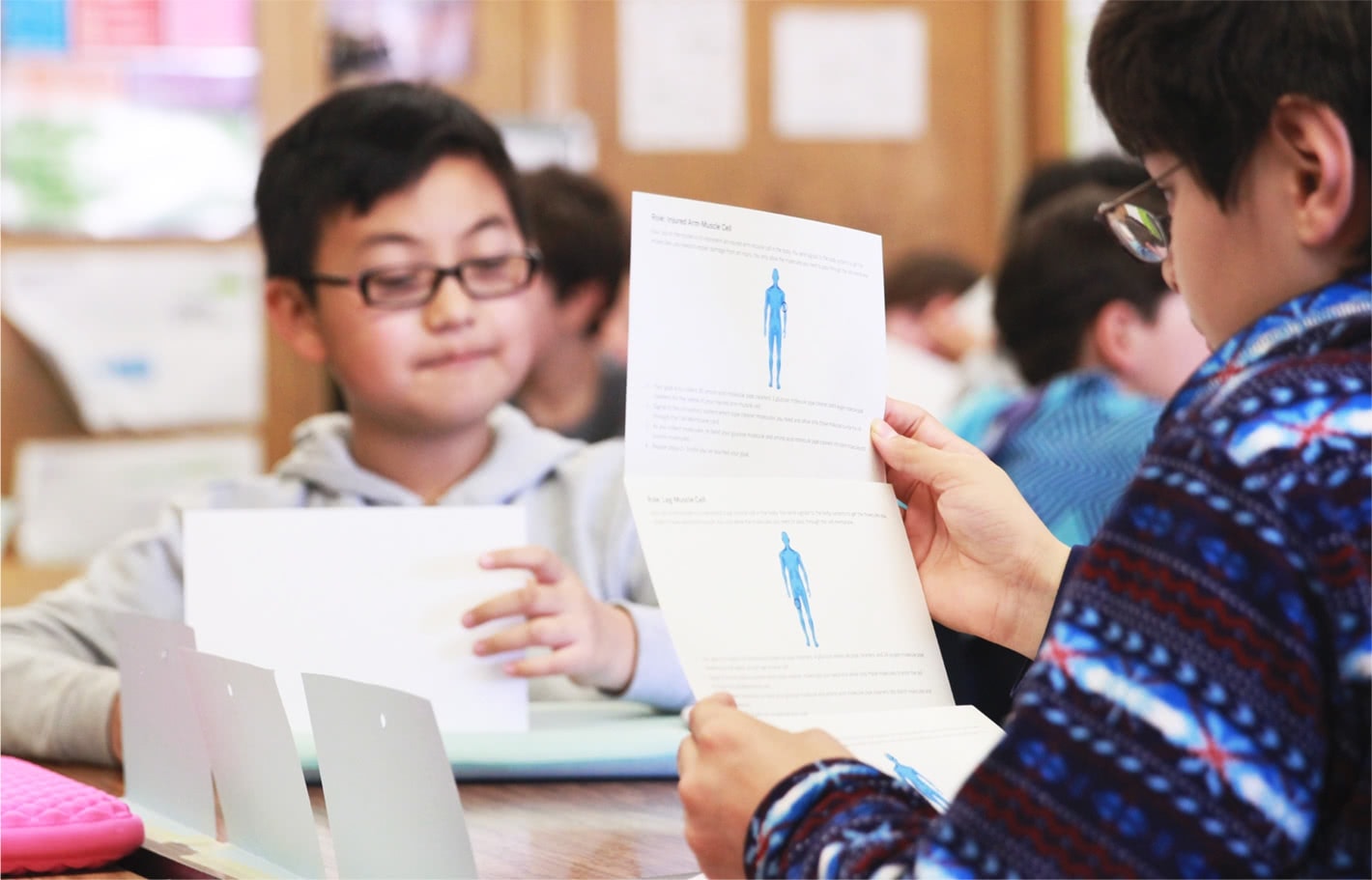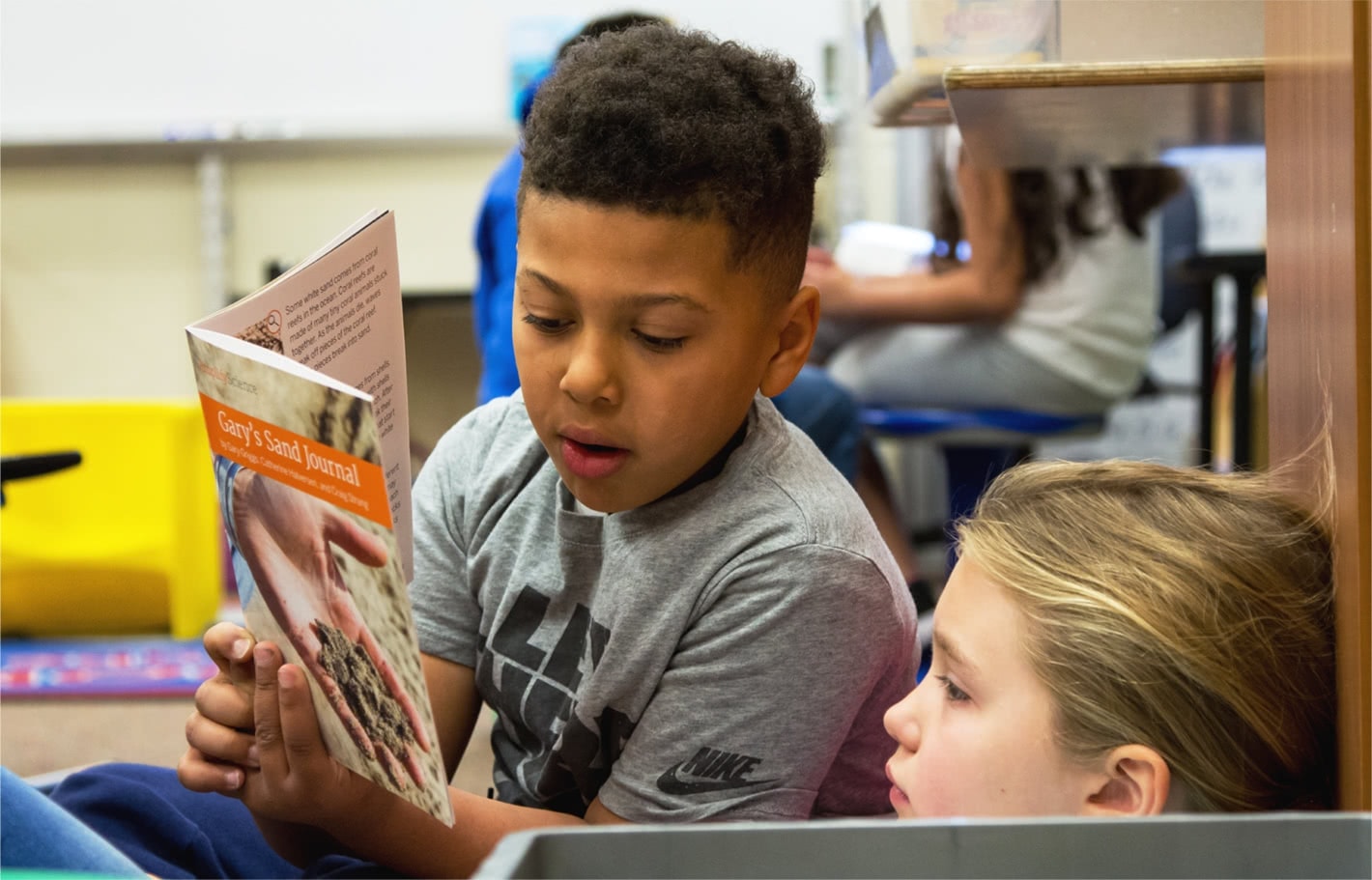Next Generation Science Standards (NGSS)
The Next Generation Science Standards (NGSS) have raised the bar in science education. The new standards aim to move the focus of instruction away from memorization and toward active engagement. In its optimal implementation, an NGSS curriculum should teach ¼â½ÐÊÓƵapp to think like scientists and engineers, grapple with core scientific principles, and support deep learning of concepts that cut across domains.

What are the three dimensions of NGSS?

Science and Engineering Practices – The Science and Engineering Practices (SEPs) show ¼â½ÐÊÓƵapp how scientists and engineers investigate, model, and explain the world around us. They’re also the dimension of the NGSS that can most capture a student’s curiosity and show how science and engineering can help solve the major challenges facing our society.
1. Asking questions (for science) and defining problems (for engineering)
2. Developing and using models
3. Planning and carrying out investigations
4. Analyzing and interpreting data
5. Using math and computational thinking
6. Constructing an explanation (for science) and creating a solution (for engineering)
7. Engaging in an argument stemming from evidence
8. Obtaining, evaluation, and communicating information
Crosscutting Concepts – Crosscutting Concepts (CCCs) help ¼â½ÐÊÓƵapp make connections across Disciplinary Core Ideas (DCIs), and unify the application of SEPs. These are often the most challenging concepts for ¼â½ÐÊÓƵapp to figure out.
1. Patterns
2. Cause and Effect
3. Scale, Proportion, and Quantity
4. Systems and System Models
5. Energy and Matter
6. Structure and Function
7. Stability and Change
Disciplinary Core Ideas – Disciplinary Core Ideas (DCI) are the main concepts that make up the NGSS. Grouped into four domains (Physical Science, Life Science, Earth and Space Science, and Engineering, Technology, and Applications of Science), DCIs form the broad content necessary to understand science.
1. Physical Sciences
2. Life Sciences
3. Earth Sciences
4. Engineering, Technology and Application of Science
In its optimal implementation, an NGSS curriculum should coach ¼â½ÐÊÓƵapp to think like scientists and engineers, grapple with core scientific principles, and support deep learning of concepts that cut across domains. We set out to create a science program that educators can use to bring three-dimensional science learning to life. ¼â½ÐÊÓƵapp Science is a robust, multimodal, hands-on program made to fulfill the new science standards, as well as a substantial number of ELA and math standards. Educators who adopt ¼â½ÐÊÓƵapp Science will have access to a comprehensive curriculum complete with detailed lesson plans, embedded assessments, hands-on activities and materials, digital simulations, and robust teacher support resources.
Built for new science standards and three-dimensional learning
¼â½ÐÊÓƵapp Science’s NGSS curriculum meets higher expectations for science teaching and learning.
- Anchor phenomena, explored through diverse interdisciplinary contexts, serve as the foundation for compelling, coherent storylines.
- Research-based multimodal learning allows ¼â½ÐÊÓƵapp to develop expertise in all Science and Engineering Practices (SEPs) and deep understanding of Disciplinary Core Ideas (DCIs) and Crosscutting Concepts (CCCs) through experiences within a wide variety of contexts.
- Modeling tools enable ¼â½ÐÊÓƵapp to create, and later revise, visualizations of their ideas of key scientific phenomena at critical points in the curriculum.
- Embedded engineering in units focused on engineering and technology emphasize that there’s not always one right answer, as ¼â½ÐÊÓƵapp balance competing constraints to design the best justifiable solutions.
Grade-specific resources

-
Elementary School (K-5)
-
Middle School (6-8)
What do ¼â½ÐÊÓƵapp do in an NGSS curriculum?

The NGSS calls for deep linkages between the three dimensions of Crosscutting Concepts, Disciplinary Core Ideas, and Science and Engineering Practices. To do this effectively, ¼â½ÐÊÓƵapp need to gather evidence from a variety of sources, make sense of that evidence, and construct strong scientific arguments about real-world phenomena.
Learn moreEngineering in the Next Generation Science Standards

The Next Generation Science Standards include eight science and engineering practices that show ¼â½ÐÊÓƵapp how scientists and engineers actually investigate, model, and explain the real world, and design and produce effective solutions to real-world problems.
In the classroom, the science and engineering practices help ¼â½ÐÊÓƵapp understand how scientists and engineers actually work.
Evidence in the era of NGSS

How do we support ¼â½ÐÊÓƵapp in building evidence-based explanations of phenomena? A multi-modal approach allows ¼â½ÐÊÓƵapp to gather evidence from a variety of sources and grapple with phenomena and real-world problems like scientists do.
Learn more about how a deep understanding of NGSS can support you in making principled pedagogical decisions!
Active Reading: Treating reading as an act of inquiry

Active Reading supports student engagement in reading complex science text, makes reading a motivating, student-centered experience, and allows ¼â½ÐÊÓƵapp to reveal genuine understanding and questions about the text.
Literacy-rich science instruction

Literacy is an integral part of science. While practicing scientists actively investigate the natural world, large parts of their investigations involve reading, writing, listening, and speaking in order to obtain, evaluate, and communicate information about the natural world. Scientists read about and connect their work to the work of other scientists, explain their findings, and communicate ideas to a variety of audiences.
Take a closer look at the importance of , and see how ¼â½ÐÊÓƵapp benefit from reading, writing, and talking like real scientists.